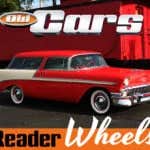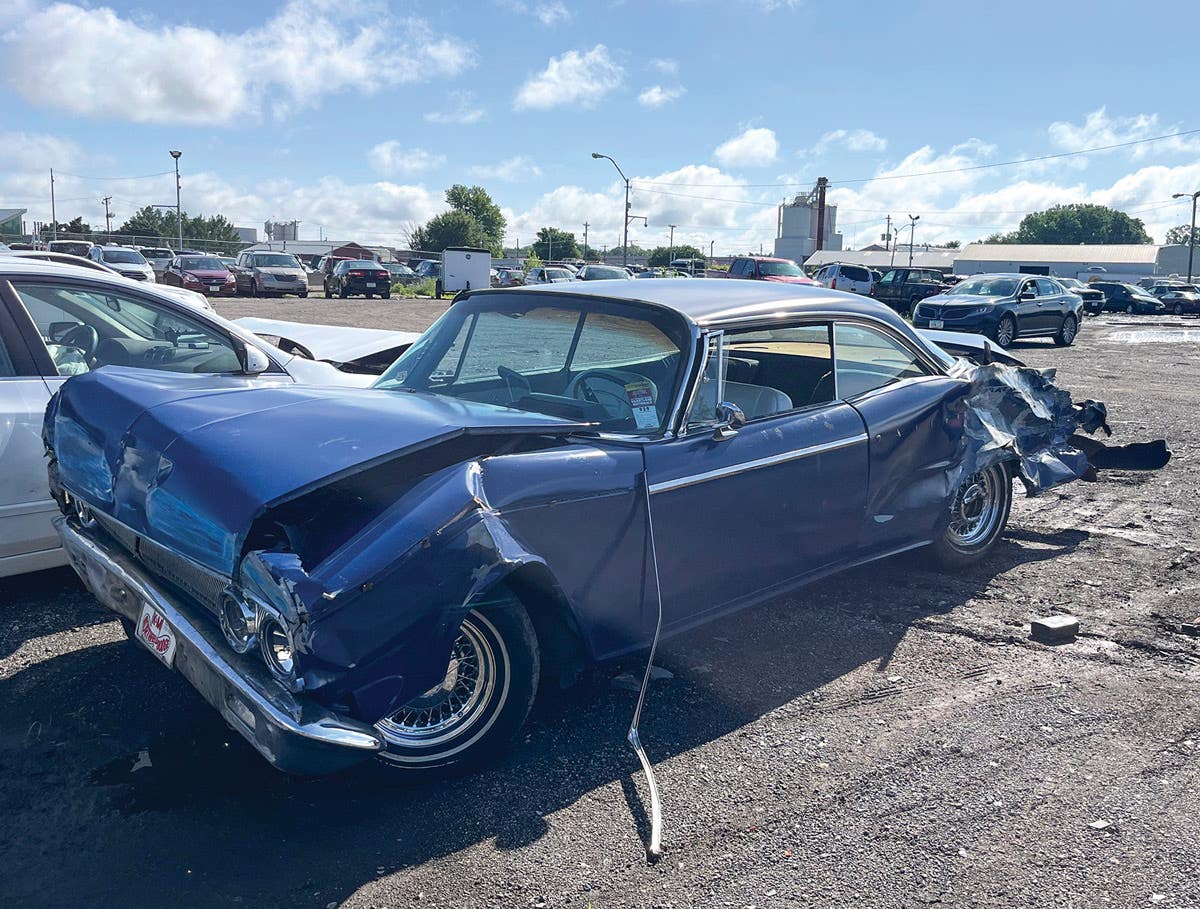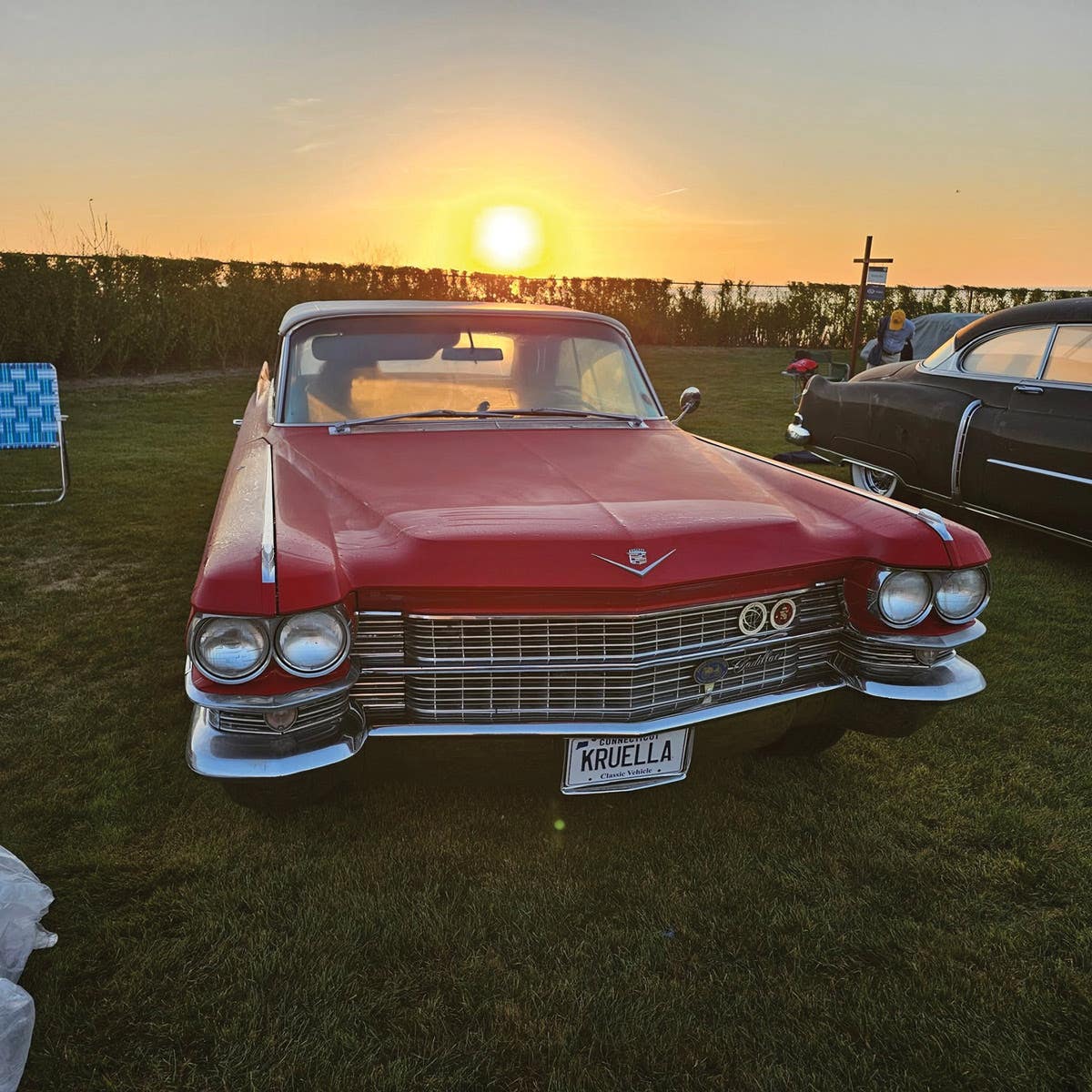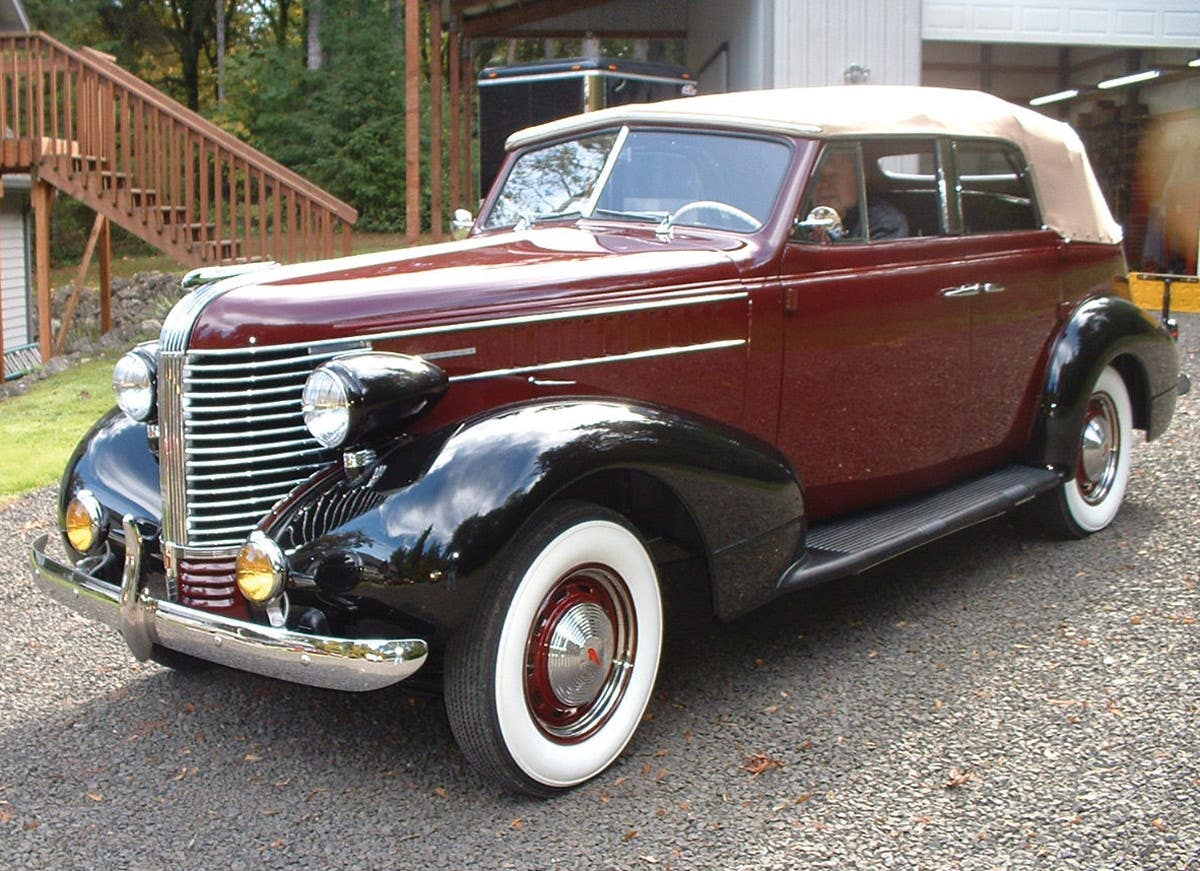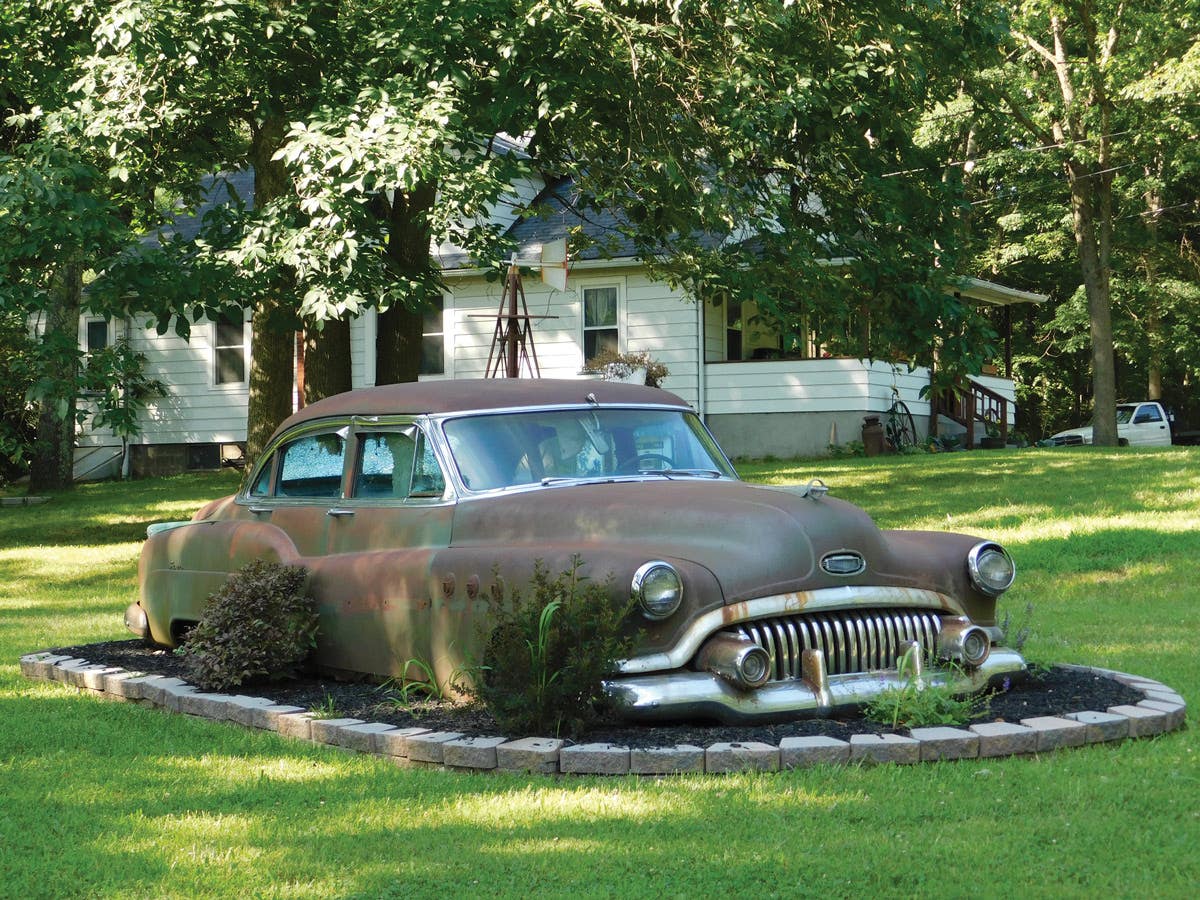Car of the Week: 1955 Chevrolet Nomad
A lot of old car lovers are still kicking themselves for missing the boat on the Nomads, which have become among the most beloved cars of the 1950s. Luke Miller was one of those guys who was thinking ahead.
Story and photos by Brian Earnest
Even if his dad didn’t agree with him, Luke Miller was definitely ahead of the curve on this one.
It seems so obvious now: how could a handsome, two-door hardtop station wagon with “Tri-Five” Chevy Bel Air DNA and some Corvette styling thrown in not be cool and collectible? How come everybody wasn’t latching onto those great Chevrolet Nomads from 1955-’57 and keeping them as hobby cars?
A lot of old car lovers are still kicking themselves for missing the boat on the Nomads, which have become among the most beloved cars of the 1950s and a hot ticket whether they are restored, rodded or original and unmolested.
Miller bought into the idea that the wonderful wagons were keepers, however, and he couldn’t be blamed for wearing that vindicated “I told you so!” look on his face for all these years anytime he gets behind the wheel of his lovely ’55 Nomad.
“I think I saw something in about 1968 in Motor Trend magazine about 10 collectible cars, and the Nomad was in there … The Golden Hawk and the Lincoln Continental and a couple others were also in there, I think,” recalled Miller, a resident of Caledonia, Wis., south of Milwaukee. “I don’t think I was looking for a Nomad, but I was looking for an old car of some kind. I walked through Jake’s yard [in Reedsburg, Wis.] many times but I never saw this car.
“But one day I finally saw this Nomad in the yard, and when I first told my dad about it, he said, ‘Oh, you don’t want that piece of scrap iron.’ Or maybe his words were, ‘Why do you want that piece of scrap iron?’ So finally I got that Motor Trend magazine and showed him the article and he said, ‘Yeah, that might be desirable.’ So we got it.”
And so began a 44-plus-year odyssey that has taken Miller around the country many times in his wagon and transformed him into one of the most devoted “Nomaders” — as the wagon owners call themselves — and most visible and active national club members. Miller estimates he has rolled up about 250,000 miles in his Nomad and holds a streak of 42 years in which he has piloted the car to a national meet under its own power. “I was number 250 of that first club [the National Nomad Club, formed in 1970],” he said. “That ran until 1988, and then the Chevrolet Nomad Association came into being, and that’s been 24 years there. I’m the only member that has driven their Nomad there every year for 42 years. And there are about six of us that have been to the Nomad meets every year.”
Not bad for a car that Miller first used as his college beater while he went to school at the University of Wisconsin-Stout. It was there that he studied to become a tech-ed teacher, which he turned into a career. He didn’t figure the decision to buy a Nomad would give him a permanent hobby, but once he got the car running, Miller never let it go.
“No, it didn’t run. It was missing the intake manifold. I don’t think [it had been running recently],” he said. “It had a ’62 calendar that was on the sun visor, I found that when I opened the car up. It might have been sitting since 1962… Jake’s might not have gotten it until 1967, who knows? Maybe that’s why I hadn’t noticed it.
“But it was pretty complete, other than one headlight was missing and the eyebrow over the one headlight. The turn signal was missing. A dent was in the fender and there was rust in front of each one of the wheels, in what they call the dogleg area.”
At the time, Miller needed a car to get back and forth to school, and a guinea pig to do some tech-ed training on, so the Nomad became his daily transportation and restoration training car. He initially made due with a few decidedly “un-Nomad-like” parts, including bucket seats and a four-on-the-floor shifter from a Pontiac GTO. “Everybody that saw it with the bucket seats said, ‘Boy, that would be neat with the front seat in it.’ I had the front seat, but it was in kind of tough shape,” Miller recalled with a laugh.
He eventually swapped out the original six-cylinder engine in favor of a 265. The Powerglide that came from the factory was also removed in favor of a three-speed. Miller later removed the 265, too, in favor of a 327 mill “that I got at a local dealership in Reedsburg. That engine had some damage, though, so I took it out at Stout and had it restored — put a new crank in it and bearings… The first time we drove it to a Nomad meet was in 1970 out in Colorado Springs, and we drove it back and had just gotten back when my brother said, ‘I wanna go up to Wisconsin Dells and watch them race.’ Well he came back at 2 in the morning and knocked on my door and said, ‘Luke there is something terrible wrong with your car. It was shaking and vibrating real bad.’
“So we towed it back to town and pulled the pan down and the crank was broken between the No. 4 and 5 main, but it still ran.”
Ultimately, Miller installed a 350-cid V-8 from a 1968 Camaro and mated it to a three-speed with overdrive. It’s not exactly factory-issue, but it is a set-up that has served him well for 30 years. This past year Miller had the Nomad completely restored from the pavement up at Ken’s Klassics in Muscoda, Wis, and the 350 stayed under the hood.
“I still have the 265 sitting on the stand back home,” Miller said.
It wasn’t the 235-cid six-cylinder or optional 265 V-8 that made the Nomads so attractive anyway. It was their all-new, modern-looking, creative styling that turned the Nomads and their Pontiac Safari cousins into such trend-setters.
The Nomads debuted in 1955 as one of Chevy’s class of “Hot Ones,” showing off Bel Air trim and some features that had been borrowed from the Corvette Nomad prototype that had appeared at the General Motors Motorama at the Waldorf Astoria Hotel in New York City in 1954. The Nomad was a previously unheard of combination of a flashy hardtop coupe and a utilitarian station wagon.
From the back, the Nomads looked like they should have been included in the Corvette family photo, with seven vertical spears lined up on the forward-sloping tail gate, but with tail lamps that mimicked the other ’55 Bel Airs.
The new 265 V-8 had an overhead-valve design with higher compression. In base form with the standard two-barrel, the bigger power plant was rated at 162 hp. Buyers could get 180 horses if they moved up to the four-barrel version, or they could go to the top of the performance ladder and order the “Super Power Pack” option with 195 hp.
Convenience options included power steering and brakes, power seat, electric windshield wipers, air conditioning and a lengthy list of other goodies.
Before any adds-ons, a V-8 equipped Nomad carried a base sticker price of $2,571 — about 100 bucks more than the six-cylinder version and about $210 more than the full-sized four-door Bel Air wagon. The four-door wagon proved to be far more popular than the two-door Nomad sport wagon. According to the Standard Catalog of American Cars 1946-1975, only 6,103 of the sporty two-door wagons were built for the first year, compared with 24,313 assemblies of the four-door hauler.
For all its appeal, the Nomad was a bit of an oddity at the time and it was the most expensive car in the entire Chevrolet lineup, which didn’t help its first-year sales performance. Production grew modestly to 7,886 for 1956, then slumped slightly to 6,103 for 1957, which signaled the end of the first-generation run for the original Nomad.
Miller admits he had no idea how collectible and valuable the Nomads would eventually become when he first dragged his car home. He was just happy to have a car to call his own, even if it had a salvage title. “I was driving my mom’s ’50 Chevy and then her ’53 Chevy, and then this one came along, and it was the first one that ever had my name on the title,” he said. “I think we got it in early April, maybe, and by May we had it running. I had to have the local constable come out and look at it… He inspected it. I guess he looked at the VIN and a couple things and he said, ‘Yeah, it’s OK.’ So the title is stamped ‘previously junked and reconditioned.’ I just got the title re-done again and thought maybe they could forget that, but they didn’t.”
After more than four decades on the road with his wagon, Miller decided to give the car the full restoration treatment this year. This time he was ready to turn everything over to a professional shop, and Ken’s Klassics provided a splendid restoration, complete with a stunning Regal Turquoise and India Ivory (paint code 612) two-tone paint job. “I stripped all the interior and most of the glass out of it at home … Then Ken came with his trailer and took it over to Muscoda and he had it until the last week in June,” Miller said. “I kind of put him under the gun, because on the Fourth of July I had to have it for Sacramento [for the Nomad national meet]. He just did a great job with it. I’m very happy with it.”
Miller also spends time behind the wheel of his ’56 Safari wagon, 1967 RS/SS Camaro and 1969 Malibu convertible, but it is the Nomad that will forever be his favorite. “It’s just been a great, fun car, and we’ve met a lot of great people with it,” he said. “The club is just a great family organization.”
This past summer, Miller said his was one of 32 1955 Nomads at the national meet. He expects to be there again every year he is able, driving his car to the show site. “My wife gets a little concerned because she says this is our bank account,” Miller laughed. “But actually, most of the money came from my mom. She passed away in 2010 and my dad passed away in 2000. When my mom died we inherited about two-thirds of what it cost to restore this car.
“So Dad’s money is being used to fix up that old piece of scrap iron.”
________
Got a car you’d like us to feature as our “Car of the Week“? We want to hear from you! E-mail us and tell us all about it.


